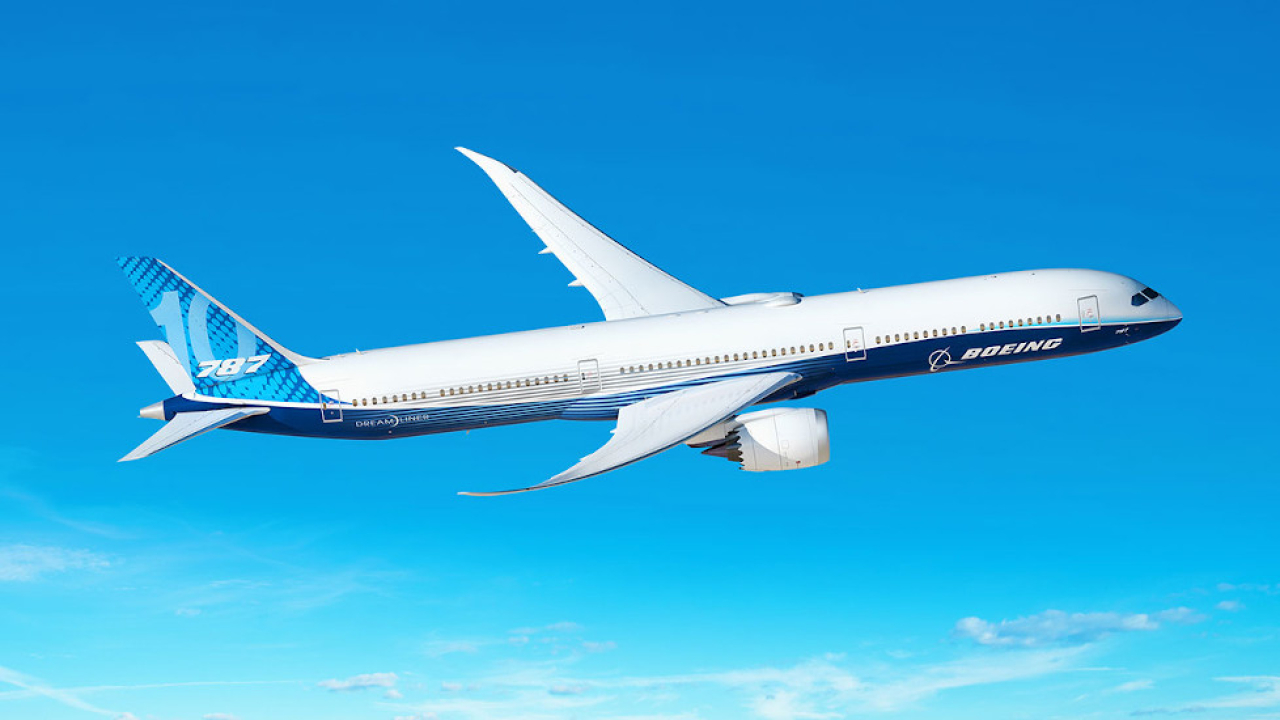Middle East leading the world with onboard mobile telecoms

“The Middle East airlines are taking up onboard mobile phone services because they are trading on the quality of their service,” declares George Cooper, chief executive of Kuwaiti premium airline Wataniya. “It’s all about service, and onboard mobile phone is something new for them to add to their cabin offerings. In this very competitive market, if a carrier can find something that provides an edge, even for a year or two before the other guys get it, then it’s well worth doing.”
As the former boss of OnAir, one of the two onboard mobile service providers, and now running the first airline to introduce OnAir on a full commercial basis, Cooper knows what he’s talking about. He points to another factor behind the region’s race to be an early adopter. “Mobile usage in this part of the world is very high compared with even the Western economies,” he says. “One reason for this is the limited performance of the terrestrial fixed networks outside the big conurbations, causing people to use their mobiles instead.”
Wataniya opened for business in January and at the same time became OnAir’s launch customer – a number of European airlines have launched trials but none has yet committed. Hard on Wataniya’s heels was Royal Jordanian, which is now offering the service on a single Airbus A319. But they were both beaten to the big punch by yet another Middle Eastern carrier – Emirates. The Dubai giant led the world by introducing the rival AeroMobile service in March 2008 and has now equipped more than a quarter of its fleet, with the rest following at a rate of about three aircraft a month.
The man behind the Emirates programme is Patrick Brannelly, VP for passenger communications and visual services. He shares Cooper’s conviction that onboard mobile is an obvious thing to do, and dismisses US claims that the introduction of voice services would provoke air rage incidents.
Patrick Branelly - Customer feedback is great
“The early concerns about potential impact on other passengers have proved, as expected, to be unfounded,” he says. “We very rarely see multiple simultaneous calls, and most calls are shorter than a couple of minutes. Text messaging is very popular, and the feedback from our customers is full of enthusiasm.”
The AeroMobile and OnAir systems are capable of supporting voice calls, text messaging and email. A control panel in the cabin allows the flight attendants to switch the whole system on and off, and select voice service, data service or both simultaneously. While Wataniya plans to carry out a brief evaluation before offering voice, Emirates enabled voice from the start, as has Royal Jordanian.
The Amman-based national carrier is offering the service on an Airbus A319 operating within the Middle East and on routes to Europe, India and North Africa. The airline is reported to be planning to introduce it on a further eight aircraft – four A320-200s and a similar number of A321-200s. Besides voice, the service comprises text messaging and email with mobile phones and BlackBerries, and managed Internet access with GSM data-capable laptops.
Geneva-based OnAir counts in its potential customer base a number of leading European airlines - Air France, which completed a trial last year, and current triallists Ryanair, bmi of the UK and TAP Portugal. But when it comes to service decisions, Middle East carriers loom large. As well as Wataniya and Royal Jordanian, Jazeera Airways and Oman Air have announced programmes, while the rest of the world has supplied commitments from Malaysian operators Air Asia and Air Asia X, British Airways, TAM of Brazil, Airblue of Pakistan, India’s Kingfisher and Shenzhen Airlines in China.
Oman Air plans to equip seven Airbus A330s and to introduce the service by the end of the year. Kuwait-based low-fare operator Jazeera Airways says it will retrofit six Airbus A320s and line-fit a further 34 on order.
Though at five carriers AeroMobile’s customer base is smaller than that of OnAir, it does include another Middle Eastern big name – Saudi Arabian Airlines. The Jeddah-headquartered carrier is installing AeroMobile equipment in 22 Boeing 777s in preparation for a launch before the middle of this year.
Besides Saudi Arabian and Emirates, AeroMobile’s announced customers are Qantas and V Australia, plus triallist Malaysia Airlines. V Australia says it plans to start offering AeroMobile from July, when it is due to take delivery of the fourth of seven Boeing 777-300ERs. Malaysia Airlines started a six-month trial aboard a single Boeing 777-200 last November and aims to roll out the system in the remainder of its widebody fleet this year if the results are satisfactory.
Early experience in the Middle East shows clearly that passengers like the convenience of being able to use their own mobiles in flight and are very happy with both the voice and data aspects of the AeroMobile and OnAir services. But another emerging success story, this one in North America, indicates that air travellers want even more. Since last year US company Aircell has been building up its Gogo broadband Internet access service, which is now being used by American Airlines, Virgin America and Delta, and has been selected by Northwest, United and Air Canada.
Gogo uses a combination of WiFi wireless in the cabin and a network of cellular-type ground stations to give passengers full-up access to email, the Internet and private networks via laptops and in-seat screens. Priced at a maximum of $12.95 for a coast-to-coast flight, the service is proving very popular with both leisure and business passengers. Could a similar service have a future in the Middle East?
“I think that full-up Internet is more of a long-haul service, and we are focused on this region,” says Wataniya’s George Cooper. “However, as WiFi capability becomes more common in handheld devices, demand for fuller Internet access is likely to grow. But I think that delivering a service to compare with what we now have on the ground in terms of bandwidth and speed would be very difficult technically and commercially.”
The air-to-ground links for both the OnAir service on Wataniya and Emirates’ AeroMobile offering are supported by the mobile satellite system of London-based Inmarsat. The maximum bandwidth per channel that Inmarsat can provide is the 432kbit/sec of its new SwiftBroadband service. Gogo, on the other hand, is rated in the megabit range.
Emirates’ Patrick Brannelly is looking forward to upgrading to SwiftBroadband so that he can add extra features and functions to the existing service. But he thinks that for his passengers full Internet access via laptops and inflight entertainment screens lies some way into the future. “Such a service would have to be globally available, which requires satellites. And at present no satellite operator offers the right combination of geographical coverage, bandwidth and assured business longevity.”
Stay up to date
Subscribe to the free Times Aerospace newsletter and receive the latest content every week. We'll never share your email address.

